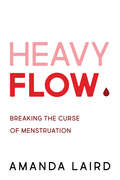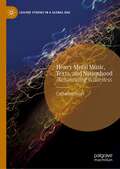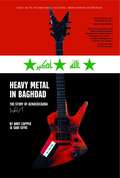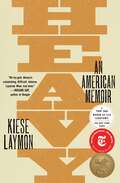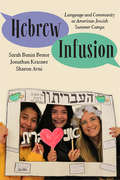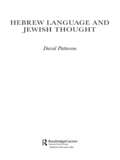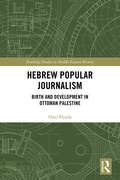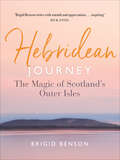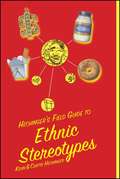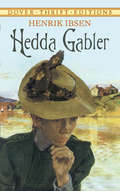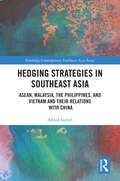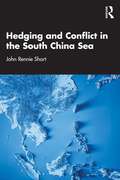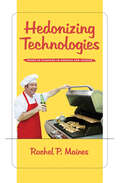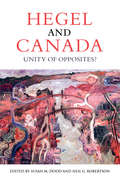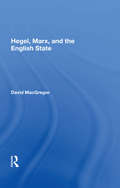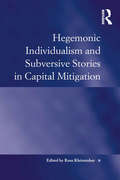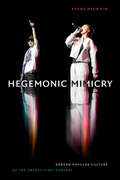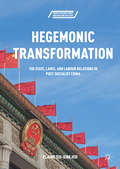- Table View
- List View
Heavy Flow: Breaking the Curse of Menstruation
by Amanda LairdWhat do you know about your menstrual cycle? Your menstrual cycle is your fifth vital sign — a barometer of health and wellness that is as telling as your pulse or blood pressure. Yet most of us see our periods as nothing more than a source of inconvenience and embarrassment. The reasons for this are vast and complex and many are rooted in misogyny. The fact is, women the world over are taught the bare minimum about menstruation, and the messages they do receive are negative: that periods are painful and gross, that they turn us into hormonal messes, and that they shouldn't be discussed. By examining the history of period shame and stigma and its effects on women’s health and wellness today as well as providing a crash course in menstrual self-care, Heavy Flow aims to lift the veil on menstruation, breaking the "curse" once and for all.
Heavy Metal Music, Texts, and Nationhood: (Re)sounding Whiteness (Leisure Studies in a Global Era)
by Catherine HoadThis book addresses how whiteness is represented in heavy metal scenes and practices, both as a site of academic inquiry and force of cultural significance. The author argues that whiteness, and more specifically white masculinity, has been given normative value which obscures the contributions of women and people of colour, and affirms the exclusory understandings of ‘belonging’ which have featured in the metal scenes of Norway, South Africa, and Australia. Utilizing critical discourse analysis and critical textual analysis of musical texts, promotional material, and participant-based observation ethnographies, it explores how the texts, discourses, and practices produced and articulated by metal scene members and scholars alike have presented heavy metal as a white, masculine pastime, yet also considers the vital work done by scene members to confront expressions of exclusory misogyny and racism when they emerge in metal scenes. The book will be of interest to researchers and scholars in the fields of metal music studies, leisure studies, sociology of culture and sociology of racism.
Heavy Metal in Baghdad: The Story of Acrassicauda
by Andy Capper Vice Mediadocumentary Heavy Metal in Baghdad featuring the members of Iraq's only heavy metal band--Acrassicauda--and their daily struggle to survive and rock on even as their country fell into a bloody insurgency. Acrassicauda (Latin for a deadly black scorpion) is Iraq's only heavy metal band. Inspired by groups like Metallica, Slayer, and Slipknot, the band began writing and playing metal in 2001, performing a handful of shows before the war started in 2003. With increased security precautions throughout Iraq, it became difficult to practice or even get through a show without serious problems. When they began receiving death threats from insurgent groups and religious fundamentalists accused them of Satan-worship, they became a band on the run. As recently seen in the feature film documentary of the same name, Iraq disintegrated around them while Acrassicauda struggled to stay together and stay alive, always refusing to let their heavy metal dreams die. Their story echoes the unspoken hopes of an entire generation of young Iraqis, and it became a race-against-time humanitarian effort, irrevocably transforming everyone's lives in the process. Going beyond the documentary to explore all the players' unique perspectives, Heavy Metal in Baghdad features new information about one of the most dramatic and unique stories in modern music.
Heavy: An American Memoir
by Kiese Laymon*Selected as One of the Best Books of the 21st Century by The New York Times* *Named a Best Book of the Year by The New York Times, Publishers Weekly, NPR, Broadly, BuzzFeed (Nonfiction), The Undefeated, Library Journal (Biography/Memoirs), The Washington Post (Nonfiction), Southern Living (Southern), Entertainment Weekly, and The New York Times Critics* In this powerful, provocative, and universally lauded memoir—winner of the Andrew Carnegie Medal and finalist for the Kirkus Prize—genre-bending essayist and novelist Kiese Laymon &“provocatively meditates on his trauma growing up as a black man, and in turn crafts an essential polemic against American moral rot&” (Entertainment Weekly).In Heavy, Laymon writes eloquently and honestly about growing up a hard-headed black son to a complicated and brilliant black mother in Jackson, Mississippi. From his early experiences of sexual violence, to his suspension from college, to time in New York as a college professor, Laymon charts his complex relationship with his mother, grandmother, anorexia, obesity, sex, writing, and ultimately gambling. Heavy is a &“gorgeous, gutting…generous&” (The New York Times) memoir that combines personal stories with piercing intellect to reflect both on the strife of American society and on Laymon&’s experiences with abuse. By attempting to name secrets and lies he and his mother spent a lifetime avoiding, he asks us to confront the terrifying possibility that few in this nation actually know how to responsibly love, and even fewer want to live under the weight of actually becoming free. &“A book for people who appreciated Roxane Gay&’s memoir Hunger&” (Milwaukee Journal Sentinel), Heavy is defiant yet vulnerable, an insightful, often comical exploration of weight, identity, art, friendship, and family through years of haunting implosions and long reverberations. &“You won&’t be able to put [this memoir] down…It is packed with reminders of how black dreams get skewed and deferred, yet are also pregnant with the possibility that a kind of redemption may lie in intimate grappling with black realities&” (The Atlantic).
Heavyweight: Black Boxers and the Fight for Representation
by Jordana Moore SaggeseIn Heavyweight, Jordana Moore Saggese examines images of Black heavyweight boxers to map the visual terrain of racist ideology in the United States, paying particular attention to the intersecting discourses of Blackness, masculinity, and sport. Looking closely at the “shadow archive” of portrayals across fine art, vernacular imagery, and public media at the turn of the twentieth century, shedemonstrates how the images of boxers reveal the racist stereotypes implicit in them, many of which continue to structure ideas of Black men today. With a focus on both anonymous fighters and notorious champions, including Jack Johnson, Saggese contends that popular images of these men provided white spectators a way to render themselves experts on Blackness and Black masculinity. These images became the blueprint for white conceptions of the Black male body—existing between fear and fantasy, simultaneously an object of desire and an instrument of violence. Reframing boxing as yet another way whiteness establishes the violent mythology of its supremacy, Saggese highlights the role of imagery in normalizing a culture of anti-Blackness.
Hebdige and Subculture in the Twenty-First Century: Through the Subcultural Lens (Palgrave Studies in the History of Subcultures and Popular Music)
by John Street Peter Webb Lucy Robinson Matthew Worley Keith Gildart Anna Gough-Yates Sian Lincoln Bill OsgerbyThis book assesses the legacy of Dick Hebdige and his work on subcultures in his seminal work, Subculture: The Meaning of Style (1979). The volume interrogates the concept of subculture put forward by Hebdige, and asks if this concept is still capable of helping us understand the subcultures of the twenty-first century. The contributors to this volume assess the main theoretical trends behind Hebdige’s work, critically engaging with their value and how they orient a researcher or student of subculture, and also look at some absences in Hebdige’s original account of subculture, such as gender and ethnicity. The book concludes with an interview with Hebdige himself, where he deals with questions about his concept of subculture and the gestation of his original work in a way that shows his seriousness and humour in equal measure. This volume is a vital contribution to the debate on subculture from some of the best researchers and academics working in the field in the twenty-first century.
Hebrew Infusion: Language and Community at American Jewish Summer Camps
by Sarah Bunin Benor Jonathan Krasner Sharon AvniEach summer, tens of thousands of American Jews attend residential camps, where they may see Hebrew signs, sing and dance to Hebrew songs, and hear a camp-specific hybrid language register called Camp Hebraized English, as in: “Let’s hear some ruach (spirit) in this chadar ochel (dining hall)!” Using historical and sociolinguistic methods, this book explains how camp directors and staff came to infuse Hebrew in creative ways and how their rationales and practices have evolved from the early 20th century to today. Some Jewish leaders worry that Camp Hebraized English impedes Hebrew acquisition, while others recognize its power to strengthen campers’ bonds with Israel, Judaism, and the Jewish people. Hebrew Infusion explores these conflicting ideologies, showing how hybrid language can serve a formative role in fostering religious, diasporic communities. The insightful analysis and engaging descriptions of camp life will appeal to anyone interested in language, education, or American Jewish culture.
Hebrew Language and Jewish Thought (Routledge Jewish Studies Series)
by David PattersonDrawing on more than three hundred Hebrew roots, the author shows that Jewish thought employs Hebrew concepts and categories that are altogether distinct from those that characterize the Western speculative tradition. Among the key categories that shape Jewish thought are holiness, divinity, humanity, prayer, responsibility, exile, dwelling, gratitude, and language itself. While the Hebrew language is central to the investigation, the reader need not have a knowledge of Hebrew in order to follow it. Essential reading for students and scholars of Judaism, this book will also be of value to anyone interested in the categories of thinking that form humanity's ultimate concerns.
Hebrew Popular Journalism: Birth and Development in Ottoman Palestine (Routledge Studies in Middle Eastern History)
by Ouzi ElyadaThe book examines the birth, development, and mode of operation of the Hebrew popular press that progressed in Ottoman Palestine between 1884 and the eruption of World War I in 1914. The inquiry yields a profile of the printers, editors, and journalists, and examines the editors’ working patterns, the gathering of journalistic information, and distribution of the resulting product in the public sphere. Addressing the fact that nearly all of the Hebrew press in the eighteenth and nineteenth centuries appealed to an elitist intellectual and affluent readership, the book breaks new ground by showing that from the 1880s onward, a popular press came into being in Palestine for the first time in the history of the Hebrew press. The focus is on three popular newspapers that evolved in Jerusalem along the lines of the Western popular press. While profiling the readership of the popular Hebrew press the book also investigates reading practices. Analyzing the contribution of the press to the modernization of the Hebrew language, this pioneering volume is a key resource for students and scholars of communication, media and Hebrew studies, and media and Jewish history.
Hebridean Journey: The Magic of Scotland's Outer Isles
by Brigid BensonShortlisted for the Scottish Nature Photography Book Awards Washed by the surging waves of the Atlantic Ocean, the island chain of Scotland's Outer Hebrides lies at the very edge of Europe. From white shell sands, peaty moors and gnarly mountains to heather hills, sea-green lochs and mysterious ancient monuments, these are places of unrivalled beauty. This book is a fabulous invitation to discover the unique magic of Lewis and Harris, Berneray, North Uist, Grimsay, Benbecula, South Uist, Eriskay, Bara and Vatersay, as well as the vibrant Gaelic culture of the islanders. Packed with fascinating insights, hidden gems and helpful information, it offers the uplifting opportunity for meaningful travels and life-affirming experiences in these extraordinary islands.
Hechinger's Field Guide to Ethnic Stereotypes
by Curtis Hechinger Kevin HechingerTwo fearless 'naturalists' catalogue the myriad of traits that divide the human species, uniting us all by enabling us to laugh at ourselves.
Heck Thomas, Frontier Marshal: The Story of a Real Gunfighter
by Glenn ShirleyThe Old West bred some mighty tough men!Unfortunately, the general public knows little or nothing about the good ones!Billy the Kid, the Daltons, Jesse James, Sam Bass, the Youngsters, Wesley Hardin and many more are familiar as “heroes” to the children and their parents of today. So, even more unfortunately are many so-called “lawmen” who were actually nothing but hired killers, far more crooked than most of the men they eliminated!Heck Thomas deserves to be known in a way that most of the current TV “Marshals” never deserved. Fighter, yes, and killer at times, law officer of some of the toughest areas in the Southwest (such as the Cherokee Strip and other outlaw-ridden parts of Oklahoma), he never took a bribe, was a model family man, and lived to a magnificent old age, still “in hardness,” honoured as one of the last genuine heroes of the frontier by all who knew him. No one, outlaw or politician, ever made him back down and his record of arrests and captures still stands as one of the most noteworthy of any peace officer anywhere.To a public which always seeks true heroism and is proud of the iron men who built America, this man, Heck Thomas, must stand forever as the best type of man of the West, low-voiced, courteous, law-abiding, and very, very dangerous.Heck Thomas made his lifework keeping the law, and emerges from the shadowy past to blazing life as an authentic hero of the Old Frontier.
Hedda Gabler
by Henrik IbsenA masterpiece of modern theater, Hedda Gabler is a dark psychological drama whose powerful and reckless heroine has tested the mettle of leading actresses of every generation since its first production in Norway in 1890.Ibsen's Hedda is an aristocratic and spiritually hollow woman, nearly devoid of redeeming virtues. George Bernard Shaw described her as having "no conscience, no conviction ... she remains mean, envious, insolent, cruel, in protest against others' happiness." Her feeling of anger and jealousy toward a former schoolmate and her ruthless manipulation of her husband and an earlier admirer lead her down a destructive path that ends abruptly with her own tragic demise.Presented in this handsome, inexpensive edition, Hedda Gabler offers an unforgettable experience for any lover of great drama or fine literature. Among the most performed and studied of Ibsen's dramas, it continues to provoke and challenge audiences and readers all over the world.
Hedged Out: Inequality and Insecurity on Wall Street
by Megan Tobias NeelyA former hedge fund worker takes an ethnographic approach to Wall Street to expose who wins, who loses, and why inequality endures. Who do you think of when you imagine a hedge fund manager? A greedy fraudster, a visionary entrepreneur, a wolf of Wall Street? These tropes capture the public imagination of a successful hedge fund manager. But behind the designer suits, helicopter commutes, and illicit pursuits are the everyday stories of people who work in the hedge fund industry—many of whom don’t realize they fall within the 1 percent that drives the divide between the richest and the rest. With Hedged Out, sociologist and former hedge fund analyst Megan Tobias Neely gives readers an outsider’s insider perspective on Wall Street and its enduring culture of inequality. Hedged Out dives into the upper echelons of Wall Street, where elite white masculinity is the standard measure for the capacity to manage risk and insecurity. Facing an unpredictable and risky stock market, hedge fund workers protect their interests by working long hours and building tight-knit networks with people who look and behave like them. Using ethnographic vignettes and her own industry experience, Neely showcases the voices of managers and other workers to illustrate how this industry of politically mobilized elites excludes people on the basis of race, class, and gender. Neely shows how this system of elite power and privilege not only sustains itself but builds over time as the beneficiaries concentrate their resources. Hedged Out explains why the hedge fund industry generates extreme wealth, why mostly white men benefit, and why reforming Wall Street will create a more equal society.
Hedged: How Private Investment Funds Helped Destroy American Newspapers and Undermine Democracy (The History of Media and Communication)
by Margot SuscaThe untold history of an American catastrophe The ultrawealthy largely own and guide the newspaper system in the United States. Through entities like hedge funds and private equity firms, this investor class continues to dismantle the one institution meant to give voice to average citizens in a democracy. Margot Susca reveals the little-known history of how private investment took over the newspaper industry. Drawing on a political economy of media, Susca’s analysis uses in-depth interviews and documentary evidence to examine issues surrounding ownership and power. Susca also traces the scorched-earth policies of layoffs, debt, cash-outs, and wholesale newspaper closings left behind by private investors and the effects of the devastation on the future of news and information. Throughout, Susca reveals an industry rocked less by external forces like lost ad revenue and more by ownership and management obsessed with profit and beholden to private fund interests that feel no responsibility toward journalism or the public it is meant to serve.
Hedging Strategies in Southeast Asia: ASEAN, Malaysia, the Philippines, and Vietnam and their Relations with China (Routledge Contemporary Southeast Asia Series)
by Alfred GerstlIntroducing a re-conceptualized hedging framework, this book analyses the relations of the Association of Southeast Asian Nations (ASEAN) and the middle powers Malaysia, the Philippines, and Vietnam with China in the context of the Belt and Road Initiative (BRI). The book provides a brief overview of the development of the relationships between the Southeast Asian states, ASEAN and China since 1989. The author argues that ASEAN and the majority of the Southeast Asian governments pursue a hedging strategy towards the rising China. They seek closer economic relations with Beijing, while maintaining strong security relations with Washington and also try to involve Japan. Hedging expands the strategic options of small and middle powers which are in Neorealism often restricted to bandwagoning and balancing. A hedging strategy, however, can simultaneously contain both elements of bandwagoning (e.g., in economics) and balancing (e.g., in security affairs). By examining the relations of ASEAN, Malaysia, the Philippines, and Vietnam with China and the US and Japan, the book puts forward a new, re-conceptualized hedging concept that combines foreign and security policy with economics. Adding significant new empirical knowledge, the book will be of interest to researchers in the fields of to the field of International Relations, Security Studies, Political Geography, Economics, History and Asian Studies.
Hedging and Conflict in the South China Sea
by John Rennie ShortThe South China Sea is a geopolitical hotspot where China and the US compete for dominance and the adjacent countries try to improve their position by hedging between these two superpowers.This book unpacks the conflicting and competing interpretations of what is going on in the South China Sea. It will allow readers to understand the depth and complexity of the issues. It expands our understanding by looking not only at the competing imaginaries of China and the US but also the hedging strategies of the Association of Southeast Asian Nations (ASEAN) members including Indonesia, Malaysia, Philippines and Vietnam, and the role of the United Nations Convention on the Law of the Sea.This book will appeal to all of those interested in international relations, Southeast Asia, US-China relations and all those seeking to understand conflicts in the South China Sea, one of the world’s geopolitical hotspots.
Hedonizing Technologies: Paths to Pleasure in Hobbies and Leisure
by Rachel P. MainesRachel P. Maines’s latest work examines the rise of hobbies and leisure activities in Western culture from antiquity to the present day. As technologies are "hedonized," consumers find increasing pleasure in the hobbies’ associated tools, methods, and instructional literature.Work once essential to survival and comfort—gardening, hunting, cooking, needlework, home mechanics, and brewing—have gradually evolved into hobbies and recreational activities. As a result, the technologies associated with these pursuits have become less efficient but more appealing to the new class of leisure artisans. Maines interprets the growth and economic significance of hobbies in terms of broad consumer demand for the technologies associated with them. Hedonizing Technologies uses bibliometric and retail census data to show the growth in world markets for hobby craft tools, books, periodicals, and materials from the late 18th century to today. The book addresses basic issues in the history of labor and industry and makes an original contribution to the discussion of how technology and people interact.
Hegel and Canada: Unity of Opposites?
by Susan Dodd Neil G. RobertsonHegel has had a remarkable, yet largely unremarked, role in Canada's intellectual development. In the last half of the twentieth-century, as Canada was coming to define itself in the wake of World War Two, some of Canada’s most thoughtful scholars turned to the work of G.W.F. Hegel for insight. Hegel and Canada is a collection of essays that analyses the real, but under-recognized, role Hegel has played in the intellectual and political development of Canada. The volume focuses on the generation of Canadian scholars who emerged after World War Two: James Doull, Emil Fackenheim, George Grant, Henry S. Harris, and Charles Taylor. These thinkers offer a uniquely Canadian view of Hegel's writings, and, correspondingly, of possible relations between situated community and rational law. Hegel provided a unique intellectual resource for thinking through the complex and opposing aspects that characterize Canada. The volume brings together key scholars from each of these five schools of Canadian Hegel studies and provides a richly nuanced account of the intellectually significant connection of Hegel and Canada.
Hegel, Marx, And The English State
by David MacGregorIn this radically revised intellectual portrait of Hegel and Marx that challenges standard interpretations of their political theory, David MacGregor considers the nature of the state in capitalist society. This is the first book to place Marx’s and Hegel’s political thought directly into social and historical context. Revealing the revolutionary c
Hegemonic Individualism and Subversive Stories in Capital Mitigation
by Ross KleinstuberCapital punishment policies in the USA are almost always justified by an individualistic belief in either rational choice or dispositional attribution, which justifies the death penalty either as a deterrent, or for retributive or incapacitative purposes. This book takes an in-depth look at the mitigation process and the use of individualism in the capital sentencing process. The work examines the use of individualistic (hegemonic) and contextualizing (subversive) discourses in the mitigation cases presented by capital defense attorneys and experts from trials in Delaware, and how these discourses were understood, interpreted, and utilized by jurors who served on those trials and by the judges who imposed the final sentences. This in-depth sociological examination of the use of individualizing and contextualizing accounts throughout the entire mitigation process helps to illuminate the challenges involved in structuring a death penalty that is not arbitrary in a culture that is overwhelmed by individualizing discourses, and thus struggles to account for the entrenched racial and economic inequality that is so conducive to lethal violence. In conclusion, it questions the entire premise of the Supreme Court’s jurisprudence of death, which rests on a belief that the discretion of decision makers can be 'guided' in a way that accounts for contextualizing evidence and will reduce the death penalty’s arbitrary and discriminatory application.
Hegemonic Mimicry: Korean Popular Culture of the Twenty-First Century
by Kyung Hyun KimIn Hegemonic Mimicry, Kyung Hyun Kim considers the recent global success of Korean popular culture—the Korean wave of pop music, cinema, and television, which is also known as hallyu—from a transnational and transcultural perspective. Using the concept of mimicry to think through hallyu's adaptation of American sensibilities and genres, he shows how the commercialization of Korean popular culture has upended the familiar dynamic of major-to-minor cultural influence, enabling hallyu to become a dominant global cultural phenomenon. At the same time, its worldwide popularity has rendered its Koreanness opaque. Kim argues that Korean cultural subjectivity over the past two decades is one steeped in ethnic rather than national identity. Explaining how South Korea leaped over the linguistic and cultural walls surrounding a supposedly “minor” culture to achieve global ascendance, Kim positions K-pop, Korean cinema and television serials, and even electronics as transformative acts of reappropriation that have created a hegemonic global ethnic identity.
Hegemonic Transformation: The State, Laws, and Labour Relations in Post-Socialist China (Series in Asian Labor and Welfare Policies)
by Elaine Sio-ieng HuiThis book contends that the Chinese economic reform inaugurated since 1978 has been a top-down passive revolution, in Gramsci’s term, and that after three decades of reform the role of the Chinese state has been changing from steering the passive revolution through coercive tactics to establishing capitalist hegemony. It illustrates that the labour law system is a crucial vehicle through which the Chinese party-state seeks to secure the working class’s consent to the capitalist class’s ethno-political leadership. The labour law system has exercised a double hegemonic effect with regards to the capital-labour relations and state-labour relations through four major mechanisms. However, these effects have influenced the Chinese migrant workers in an uneven manner. The affirmative workers have granted active consent to the ruling class leadership; the indifferent, ambiguous and critical workers have only rendered passive consent while the radical workers has refused to give any consent at all.
Hegemony How-To: A Roadmap for Radicals
by Jonathan SmuckerA guide to political struggle for a generation that is deeply ambivalent about power. While many activists gravitate toward mere self-expression and identity-affirming rituals at the expense of serious political intervention, Smucker provides an apologia for leadership, organization, and collective power, a moral argument for its cultivation, and a discussion of dilemmas that movements must navigate in order to succeed.
Hegemony and Heteronormativity: Revisiting 'The Political' in Queer Politics (Queer Interventions)
by Nikita Dhawan Antke Engel MarÍa Do Mar Castro VarelaThis book reflects on 'the political' in queer theory and politics by revisiting two of its key categories: hegemony and heteronormativity. It explores the specific insights offered by these categories and the ways in which they augment the analysis of power and domination from a queer perspective, whilst also examining the possibilities for political analysis and strategy-building provided by theories of hegemony and heteronormativity. Moreover, in addressing these issues the book strives to rethink the understanding of the term "queer", so as to avoid narrowing queer politics to a critique of normative heterosexuality and the rigid gender binary. By looking at the interplay between hegemony and heteronormativity, this ground-breaking volume presents new possibilities of reconceptualizing 'the political' from a queer perspective. Investigating the effects of queer politics not only on subjectivities and intimate personal relations, but also on institutions, socio-cultural processes and global politics, this book will be of interest to those working in the fields of critical theory, gender and sexuality, queer theory, postcolonial studies, and feminist political theory.
